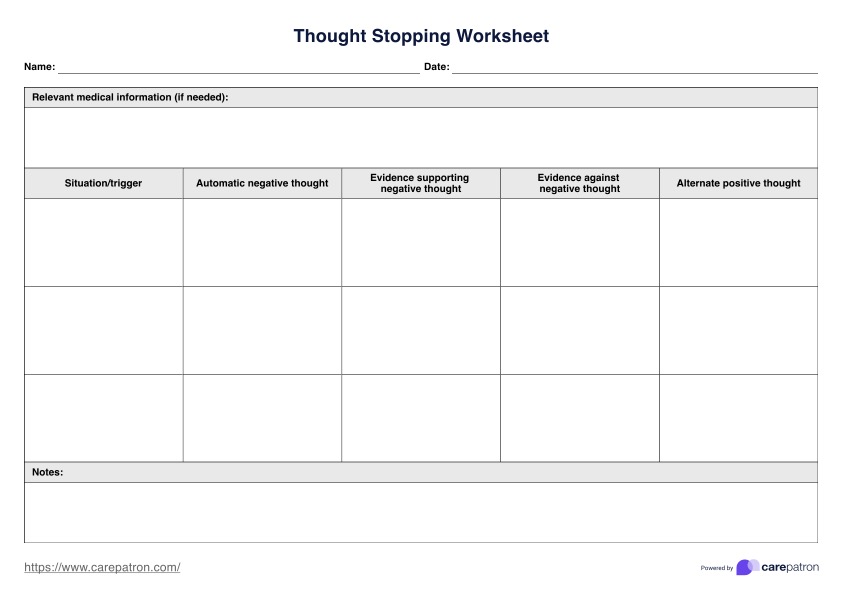A Thought Stopping Worksheet is a tool that can assist you in challenging negative thoughts and replacing them with more positive and beneficial ones.

Thought Stopping Worksheets
Help your patient challenge their negative thought patterns and replace them with more positive ones by giving them a copy of our Thought Stopping Worksheets.
Use Template
Thought Stopping Worksheets Template
Commonly asked questions
A Thought Stopping Worksheet can be used whenever you are having negative thoughts that are affecting your mood and well-being.
Simply fill in the blanks with your own situation, automatic negative thought, evidence, and alternative positive thought to create a Thought Stopping Worksheet.
EHR and practice management software
Get started for free
*No credit card required
Free
$0/usd
Unlimited clients
Telehealth
1GB of storage
Client portal text
Automated billing and online payments











